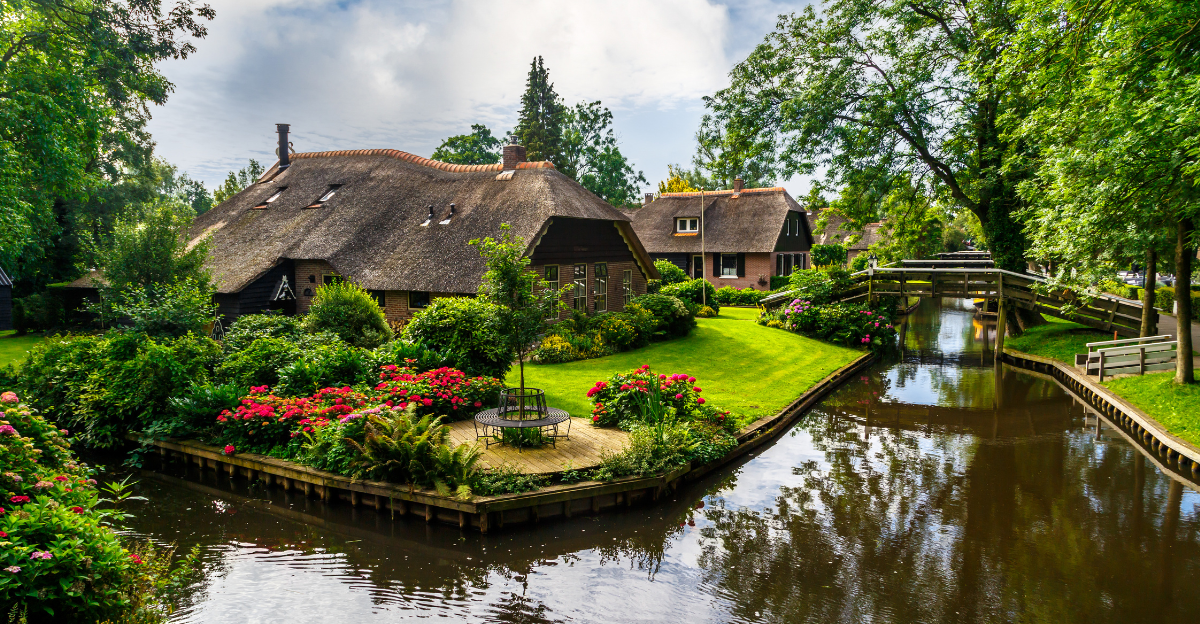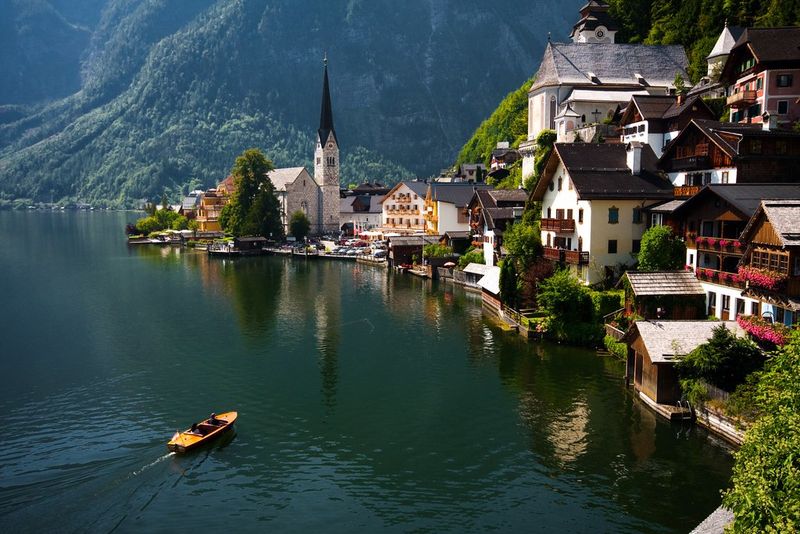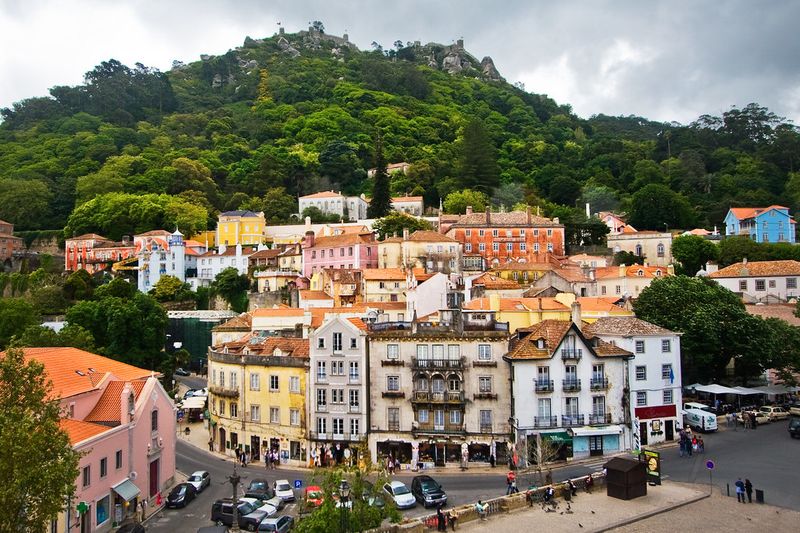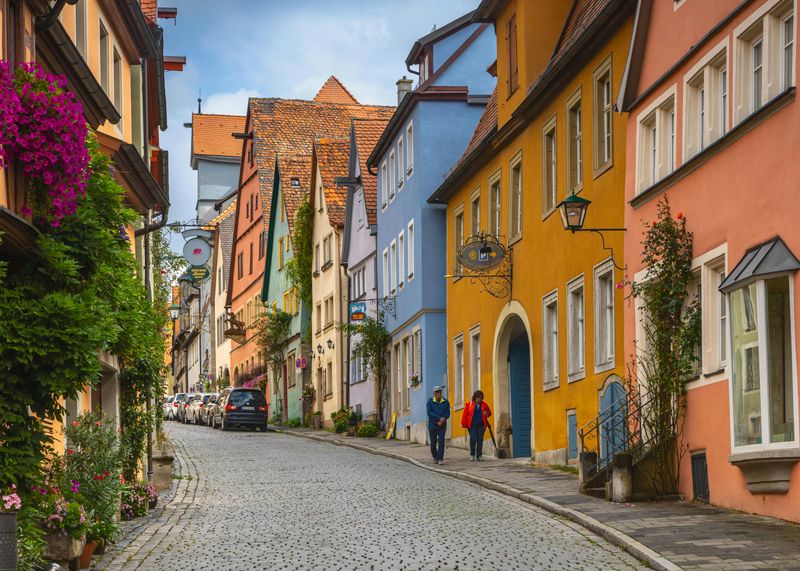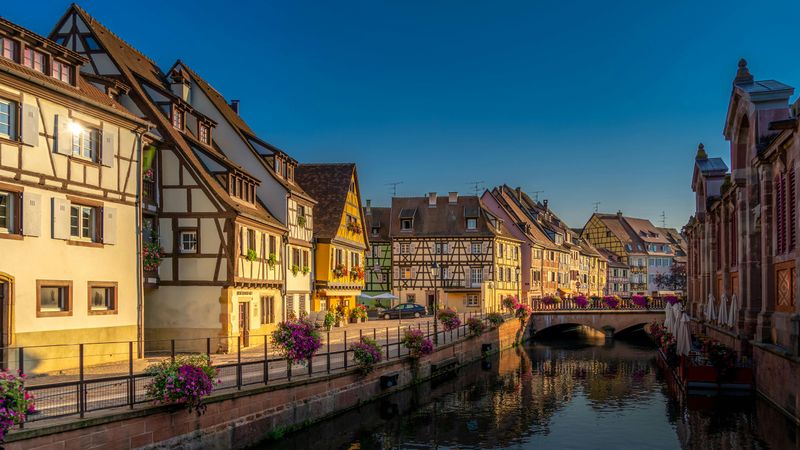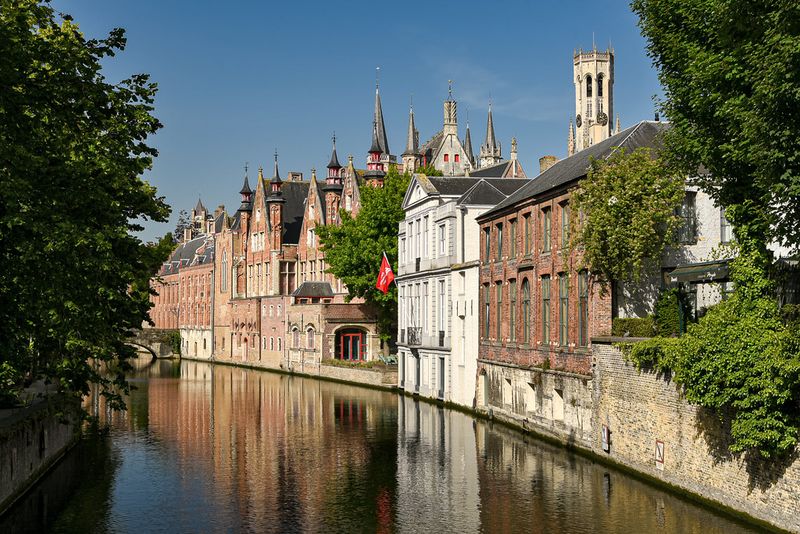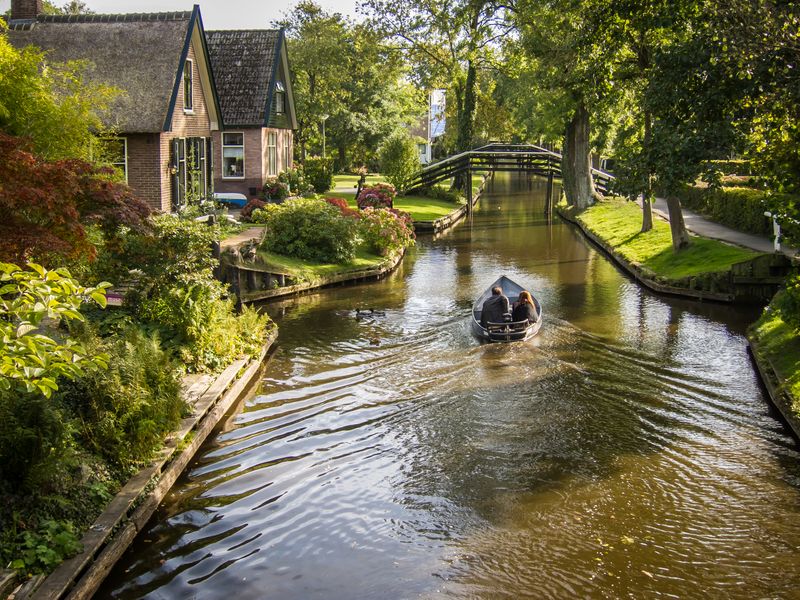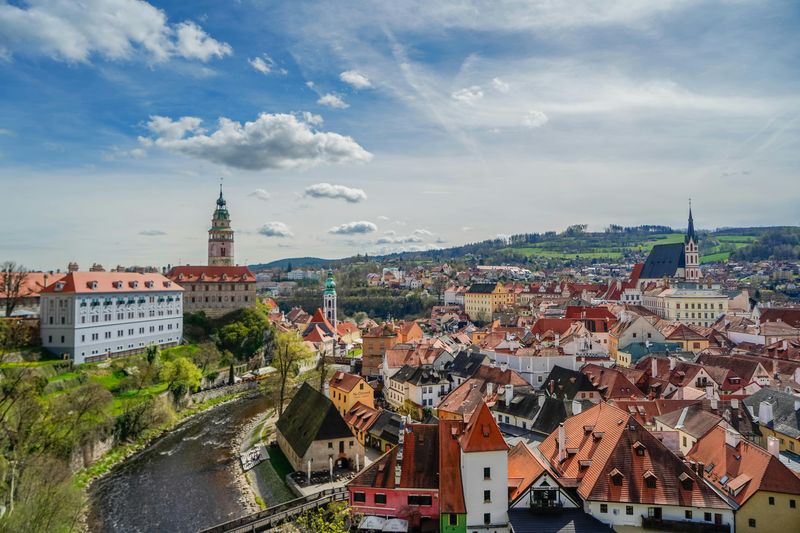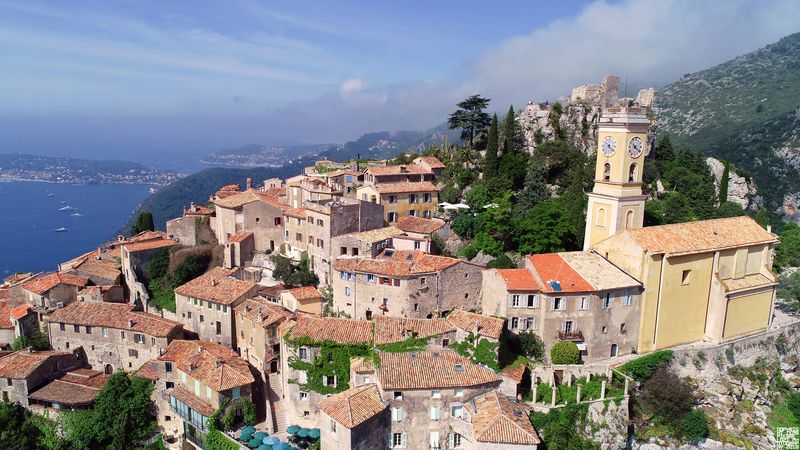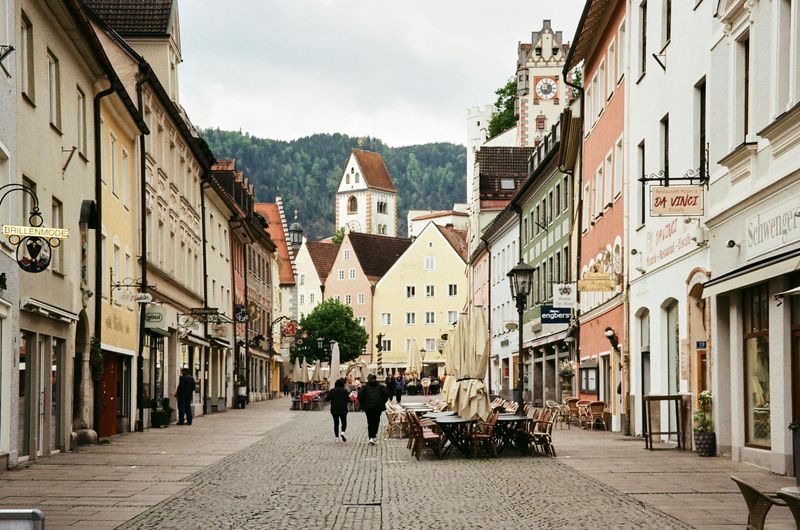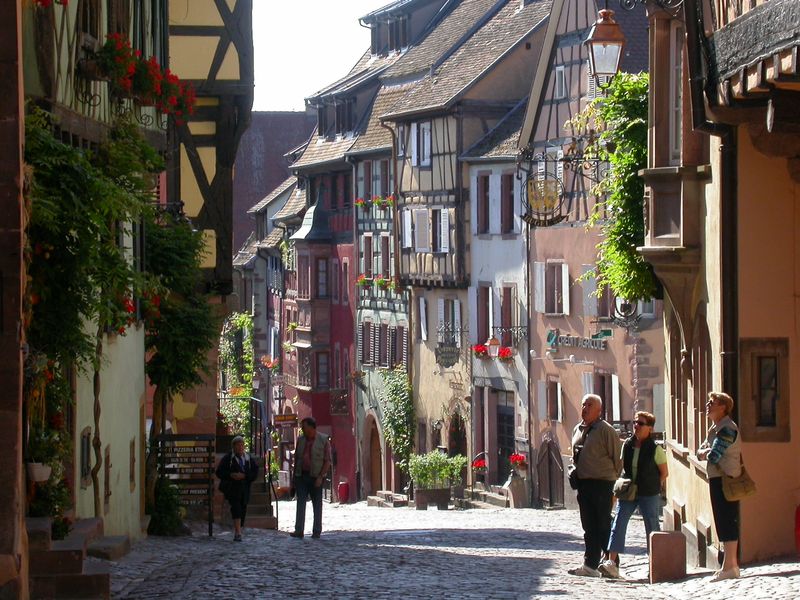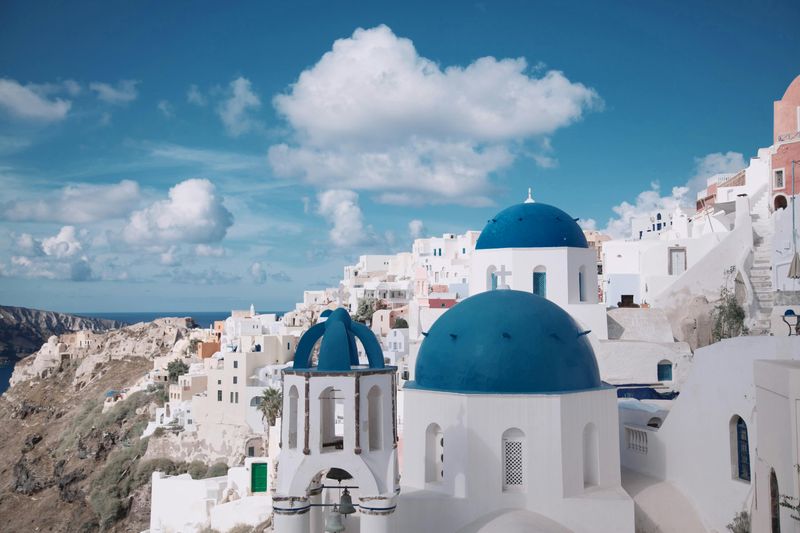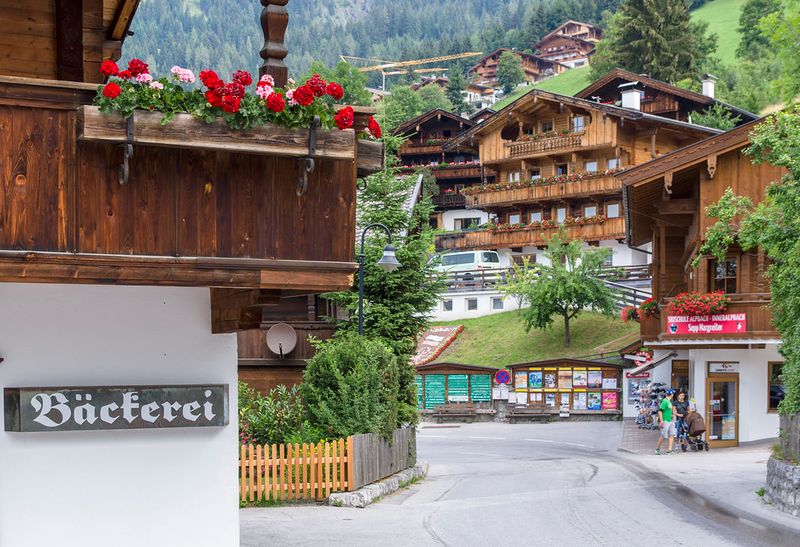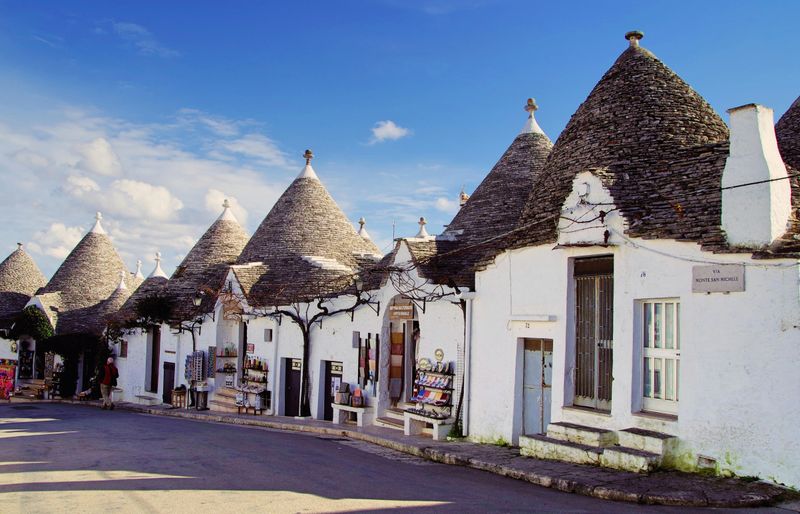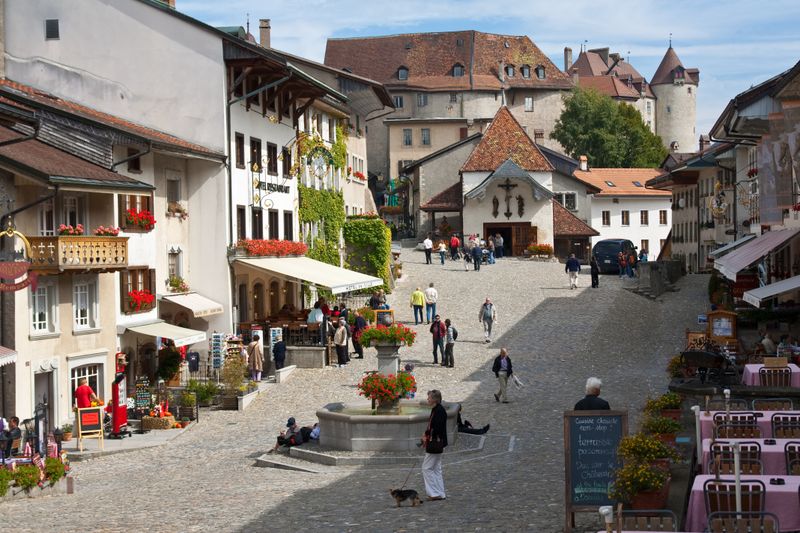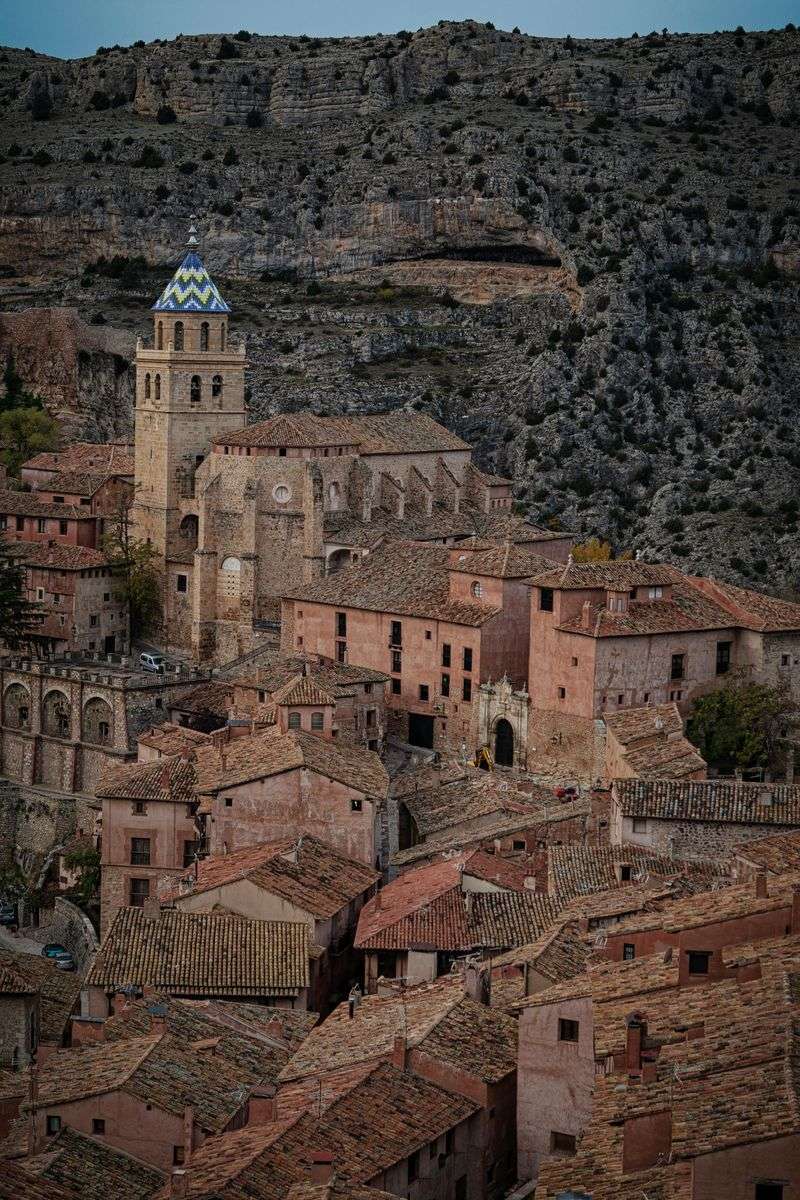Europe hides some of the world’s most magical towns that seem plucked straight from storybooks. These charming destinations showcase centuries of history with cobblestone streets, colorful buildings, and breathtaking landscapes that appear almost too perfect to be real. From alpine villages to coastal gems, these 15 picture-perfect European towns will make you wonder if you’ve stepped into a fairy tale or a movie set.
1. Hallstatt, Austria: The Alpine Jewel
Nestled between a crystal-clear lake and towering mountains, Hallstatt looks like an artist’s dream come to life. The pastel-colored houses seem to cling to the mountainside, creating a mirror-like reflection on Lake Hallstatt’s still waters.
Salt mining brought wealth to this UNESCO-listed village over 7,000 years ago, making it one of the oldest settlements in Europe. Today, visitors can explore the world’s first salt mine or take the funicular up to the Skywalk for panoramic views.
Winter transforms Hallstatt into a snow-globe scene, while summer brings vibrant flower boxes to every windowsill.
2. Sintra, Portugal: Romantic Hilltop Wonder
Colorful palaces rise from misty forests in this Portuguese wonderland just outside Lisbon. Lord Byron called Sintra “glorious Eden,” and one glimpse of its candy-colored Pena Palace explains why royalty chose this magical spot.
Narrow streets wind through town, leading to hidden gardens and castle ruins that tell stories of Moorish princes and Portuguese kings. The microclimate creates a mystical atmosphere where fog often swirls around the hilltop palaces.
Don’t miss Quinta da Regaleira with its mysterious initiation well – a spiral staircase descending into the earth that was used for secret ceremonies.
3. Rothenburg ob der Tauber, Germany: Medieval Time Capsule
Walking through Rothenburg’s perfectly preserved medieval walls feels like stepping back 500 years. Red-roofed houses line cobblestone streets that have barely changed since the Middle Ages, making this Bavarian gem Germany’s best-preserved medieval town.
Famous for its Christmas market and year-round Christmas museum, Rothenburg sparkles with magic in winter when snow dusts its half-timbered buildings. The Night Watchman’s Tour brings history alive as a costumed guide leads visitors through lamp-lit streets after dark.
Climb the Town Hall tower for a bird’s-eye view of the walled city and surrounding Tauber Valley that looks straight out of a fairy tale.
4. Colmar, France: Little Venice of Alsace
Half-timbered houses painted in pastels line canals in this storybook French town. Colmar blends German and French influences in its architecture and cuisine, creating a uniquely charming atmosphere in France’s northeastern corner.
Flower-draped bridges cross the gentle waterways of “Little Venice,” where flat-bottomed boats glide past buildings dating back to the 16th century. The town somehow survived both World Wars largely undamaged, preserving its medieval and Renaissance treasures.
Wine lovers rejoice – Colmar sits on the Alsatian Wine Route and serves as the perfect base for exploring local vineyards producing world-class Riesling and Gewürztraminer.
5. Bruges, Belgium: Medieval Masterpiece
Swans glide through canals that weave between medieval brick buildings in this perfectly preserved Belgian treasure. Often called the “Venice of the North,” Bruges captivates visitors with its stepped-gable houses reflecting in tranquil waterways.
The Markt square buzzes with activity beneath the 13th-century Belfry tower, which offers 366 steps to climb for breathtaking views. Horse-drawn carriages clip-clop along cobblestone streets, adding to the fairy-tale atmosphere.
Beyond chocolate shops and lace-makers, Bruges houses world-class art museums including the Groeningemuseum with its collection of Flemish Primitive masterpieces by Van Eyck and Memling.
6. Giethoorn, Netherlands: The Village Without Roads
Known as the “Venice of the Netherlands,” Giethoorn operates without conventional streets. Instead, over 180 wooden footbridges connect the thatched-roof cottages built on tiny islands throughout this water-logged wonderland.
Residents navigate the village by punt—a flat-bottomed boat pushed with a long pole—gliding silently past 18th and 19th-century farmhouses. The canals were originally dug by peat farmers, who inadvertently created one of Europe’s most unusual and photogenic villages.
Despite receiving thousands of visitors yearly, Giethoorn maintains its peaceful atmosphere, especially in early morning when mist hovers over the canals and the only sounds are birds and lapping water.
7. Cesky Krumlov, Czech Republic: Bohemian Fairytale
A massive castle towers over red-roofed buildings in this South Bohemian gem that curves along a horseshoe bend in the Vltava River. The entire town center is a UNESCO World Heritage site, with Renaissance and Baroque architecture that has remained remarkably untouched for centuries.
Cesky Krumlov Castle—the second largest in the Czech Republic after Prague Castle—features a unique Baroque theater where performances still use original 18th-century stage machinery. Wander through narrow cobblestone lanes that twist unpredictably, revealing hidden courtyards and artisan workshops.
Summer brings rafters floating down the river and outdoor concerts in the castle gardens, while winter cloaks the town in snow, creating magical scenes straight from a Bohemian fairy tale.
8. Eze, France: Eagle’s Nest on the Riviera
Perched dramatically on a rocky outcrop 1,400 feet above the Mediterranean, Eze seems to grow directly from the cliffside. This medieval village on the French Riviera between Nice and Monaco offers breathtaking sea views that have attracted artists and writers for centuries.
Stone houses and narrow passageways wind upward to the exotic Jardin Exotique at the village top, where cacti and succulents thrive alongside ancient ruins. The streets are too narrow for cars, preserving the village’s medieval character and peaceful atmosphere.
Perfume lovers can visit the historic Fragonard factory at the village base, while hikers can tackle the steep Nietzsche Path down to the sea—named for the philosopher who found inspiration on this challenging trail.
9. Füssen, Germany: Gateway to Fairy Tale Castles
Nestled at the foot of the Bavarian Alps, Füssen serves as the entry point to Germany’s most famous fairy tale sight: Neuschwanstein Castle. This colorful medieval town with its pastel-painted buildings and cobblestone streets is a destination in its own right.
The nearby castle—which inspired Disney’s Sleeping Beauty Castle—rises from forested mountains like something conjured from imagination. King Ludwig II built this fantasy fortress in the 19th century, complete with artificial caves and a hall designed to look like a grotto.
Beyond castle-viewing, visitors can explore Füssen’s 700-year-old streets, visit the former Benedictine monastery of St. Mang, or hike around emerald-green Lake Forggensee.
10. Riquewihr, France: Alsatian Wine Village
Surrounded by vineyards that produce world-famous Riesling wines, Riquewihr looks almost exactly as it did in the 16th century. This Alsatian village with its multicolored half-timbered houses and flower-decked balconies reportedly inspired the setting for Disney’s “Beauty and the Beast.”
Fortified walls still encircle much of the village, which miraculously escaped damage during World War II. The main street, lined with wine cellars and shops selling local specialties, slopes gently uphill beneath buildings adorned with ornate signs and painted details.
Wine has been produced here since the 8th century, and visitors can sample varieties from family-run wineries that have operated for generations along the famous Alsace Wine Route.
11. Oia, Santorini, Greece: Whitewashed Wonder
Famous for the most photographed sunset in the world, Oia clings to the northern tip of Santorini’s crescent-shaped caldera. White cave houses and blue-domed churches cascade down volcanic cliffs, creating a striking contrast against the deep blue Aegean Sea.
Originally built by sea captains, many traditional homes feature vaulted ceilings and were carved directly into the volcanic rock. Narrow marble-paved alleys wind between buildings, occasionally opening to reveal breathtaking views of the submerged volcano that shaped this unique landscape.
While crowds gather at sunset viewpoints, early risers can experience the magic of Oia’s empty morning streets when the village glows golden in the first light.
12. Alpbach, Austria: Timber Treasure in Tyrol
Voted Austria’s most beautiful village, Alpbach’s wooden chalets with flower-covered balconies create a harmonious picture against green Alpine meadows. Local building regulations require all houses to maintain the traditional Tyrolean style with wooden balconies and carved details, preserving the village’s distinctive character.
In winter, this storybook setting transforms into a family-friendly ski resort with uncrowded slopes and authentic mountain restaurants. Summer brings hiking trails through flower-filled meadows and the prestigious European Forum Alpbach, which has attracted scientists and thinkers since 1945.
The village’s 500-year-old parish church with its onion dome and the surrounding mountain peaks complete this picture-perfect Austrian scene.
13. Alberobello, Italy: Trulli Remarkable
Stepping into Alberobello feels like entering a gnome village with its 1,500 trulli—curious cone-shaped houses found nowhere else on Earth. These limestone dwellings with gray stone roofs topped by decorative pinnacles create a fairytale landscape in Italy’s southern Puglia region.
Dating back to the 14th century, trulli were originally built without mortar to avoid property taxes—they could be quickly dismantled when tax inspectors visited! Many roofs feature painted symbols with pagan or religious meanings, adding to their mystical appearance.
While one neighborhood has become commercial with souvenir shops, the Aia Piccola district remains residential, offering a glimpse of authentic trulli life away from tourist crowds.
14. Gruyères, Switzerland: Medieval Cheese Haven
Perched on a small hill surrounded by Alpine meadows, Gruyères looks like it was frozen in the Middle Ages. This walled medieval town, famous for its cheese, features a single cobblestone street leading to a 13th-century castle that dominates the skyline.
The town’s namesake cheese has been produced in the region since 1115, and visitors can watch traditional cheese-making at the La Maison du Gruyère factory nearby. For an unexpected twist, the town also houses the H.R. Giger Museum, dedicated to the Swiss artist who designed the creature from the movie “Alien.”
Mountain peaks provide a dramatic backdrop to this preserved medieval gem where fondue pots bubble in every restaurant.
15. Albarracín, Spain: Terracotta Treasure
Rising from a rocky outcrop surrounded by the Guadalaviar River, Albarracín’s pink-hued medieval buildings blend seamlessly with the reddish mountains. This fortified town in Spain’s Aragon region maintains its Moorish influence in narrow, twisting streets designed to confuse invaders and provide shade from the harsh summer sun.
The town’s unique pinkish-red color comes from local clay used in construction, creating a magical glow at sunset when the whole village seems to burn orange. Ancient walls zigzag up steep slopes to a castle ruin offering spectacular views of the surrounding pine forests and dramatic gorges.
Rock climbers flock to the surrounding boulders, while history buffs explore the 16th-century cathedral and numerous noble houses with their intricate wooden balconies.
